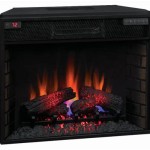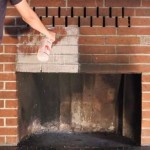Is It Safe To Mount A TV On A Brick Fireplace?
Mounting a television above a fireplace, particularly one constructed of brick, presents a complex question with various contributing factors. The aesthetic appeal of a centrally located, elevated screen is undeniable. However, the safety and practicality of such an installation require careful consideration of structural integrity, thermal dynamics, and potential hazards. This article will explore the relevant aspects, providing a comprehensive analysis of whether it is indeed safe to mount a TV on a brick fireplace.
The decision to mount a TV on a brick fireplace should never be taken lightly. A thorough assessment of the fireplace structure, the TV's weight and dimensions, and the operational characteristics of the fireplace itself are paramount. Ignoring these elements can lead to property damage, equipment failure, and, most importantly, potential safety risks.
Structural Integrity of the Brick Fireplace
The fundamental safety concern rests upon the structural soundness of the brick fireplace. Not all brick fireplaces are created equal. Older fireplaces may exhibit weaknesses due to age, weathering, or past structural damage. Before even considering mounting, a professional inspection is crucial.
The inspector will assess the condition of the brickwork, the mortar joints, and the overall stability of the chimney structure. Signs of cracking, crumbling, or shifting brick indicate potential instability that must be addressed before any mounting procedure can commence. Mortar joints that are deteriorated or missing compromise the structural integrity and require repointing, a process of removing and replacing the deteriorated mortar.
Furthermore, the presence of a lintel, which supports the brickwork above the firebox opening, is critical. If the lintel is compromised or improperly installed, the added weight of a mounted TV could exacerbate existing structural issues. The inspector will also evaluate the type of brick used in the fireplace's construction. Some brick types are more porous and prone to moisture damage than others, potentially weakening the structure over time.
The location of the mounting points in relation to the firebox is also significant. Drilling too close to the firebox can weaken the surrounding brickwork and potentially create a fire hazard. The depth of the brickwork is another crucial factor. Thin brick veneers, often used for aesthetic purposes, are generally not structurally sound enough to support the weight of a TV and mounting hardware. A full-depth brick fireplace offers significantly more stability.
Finally, consider any existing modifications or repairs to the fireplace. Previous attempts to mount objects or alter the fireplace's structure may have introduced weaknesses. A careful examination of these areas is essential to ensure they can safely support the weight of the TV.
Heat Exposure and TV Performance
Another significant concern is the heat generated by the fireplace. While a roaring fire might be infrequent, even a small fire can produce substantial heat that rises and accumulates above the mantel. Electronic components are sensitive to temperature fluctuations, and excessive heat exposure can damage the TV's internal circuitry, shorten its lifespan, and potentially create a fire hazard.
The distance between the top of the firebox and the planned TV mounting location is a critical factor. A sufficient vertical separation is necessary to mitigate heat exposure. General recommendations suggest a minimum distance of 12 inches, but this can vary depending on the fireplace's design and the frequency and intensity of its use. A mantel can provide a degree of protection by deflecting heat away from the TV, but its effectiveness depends on its size and construction.
Consider the type of fireplace. Gas fireplaces tend to produce less radiant heat than wood-burning fireplaces, making them slightly more conducive to TV mounting. However, even gas fireplaces can generate significant heat, particularly if they are used frequently or at high settings. Electric fireplaces, which primarily produce heat through convection, pose less of a direct heat exposure risk, but the warm air rising can still contribute to temperature increases around the TV.
The TV's specifications should be consulted to determine its operating temperature range. Exceeding this range can void the warranty and lead to premature failure. Consider using temperature sensors near the planned mounting location to monitor heat levels during fireplace operation. This will provide valuable data to assess the potential impact of heat exposure on the TV.
Heat shields can be installed to provide additional protection. These shields deflect heat away from the TV, reducing the risk of damage. However, they should be properly designed and installed to ensure they do not trap heat behind the TV or create other safety hazards. Ventilation is also important. Ensure adequate airflow around the TV to dissipate heat and prevent overheating. Avoid blocking vents or placing the TV in a confined space.
Mounting Techniques and Hardware
Selecting the appropriate mounting hardware and employing proper installation techniques are crucial for ensuring both safety and the longevity of the installation. Using the wrong type of mount or failing to secure it properly to the brickwork can result in the TV falling, causing damage and potential injury.
Choose a heavy-duty TV mount specifically designed for brick or masonry surfaces. These mounts typically use lag bolts or expansion anchors to secure the mount to the brickwork. Avoid using standard drywall anchors, as they are not strong enough to support the weight of a TV on brick. Consider the weight capacity of the mount and ensure it exceeds the weight of the TV by a significant margin for added safety. Tilting or full-motion mounts offer greater flexibility in positioning the TV but require even stronger anchoring due to the added leverage they exert.
Drilling into brick requires specialized tools and techniques. Use a hammer drill with a masonry bit that is appropriate for the type of brick used in the fireplace. Drill pilot holes that are slightly smaller than the diameter of the lag bolts or expansion anchors. Avoid drilling into the mortar joints, as they are weaker than the brick itself. Ensure the holes are deep enough to accommodate the anchors and bolts fully. Use a level to ensure the mount is perfectly horizontal before tightening the fasteners.
Consider the use of a mounting plate. A mounting plate is a large metal plate that is attached to the brickwork, providing a wider and more secure mounting surface for the TV mount. This can distribute the weight of the TV more evenly and reduce the stress on individual bricks. A professional installer can assess the suitability of a mounting plate for your specific fireplace and TV.
Concealing the cables is another important consideration. Running cables behind the brickwork can be challenging and may require professional assistance. Use cable management solutions to keep the cables organized and prevent them from tangling or creating a fire hazard. Avoid running cables directly behind the firebox where they could be exposed to excessive heat. Ensure that any electrical connections are made by a qualified electrician and comply with local building codes.
Finally, after the installation is complete, periodically inspect the mount and hardware to ensure everything remains secure. Check for loose bolts, cracked brick, or any other signs of deterioration. Retighten bolts as needed and address any structural concerns promptly. Regular maintenance will help ensure the long-term safety and stability of the TV mounting.
In conclusion, mounting a TV on a brick fireplace is a complex undertaking that requires careful planning, professional assessment, and adherence to safety guidelines. The structural integrity of the fireplace, the potential for heat exposure, and the proper selection and installation of mounting hardware are all critical factors that must be considered. While it is possible to safely mount a TV on a brick fireplace, it is essential to prioritize safety and consult with qualified professionals to ensure a successful and long-lasting installation.

Mounting A Tv On Brick Fireplace Step By Guide

Don T Mount Your Tv Above Fireplace Here S Why Cnet

Can I Mount My Tv Above The Fireplace

How To Mount A Tv On Brick Fireplace 7 Straightforward Steps

Can I Mount My Tv Above The Fireplace

How To Safely Mount A Tv Above The Fireplace On Brick Wall

How To Mount A Tv Over Brick Fireplace And Hide The Wires Designing Vibes Interior Design Diy Lifestyle

Mounting A Tv On Brick Above Fireplace House Of Hepworths

How To Mount A Tv On Brick Fireplace 7 Straightforward Steps

When Mounting A Tv On Interior Brick Drill Into The Not Mortar Pine Hall
Related Posts








